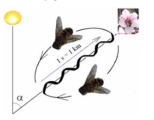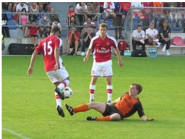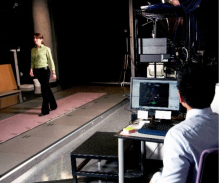CA research is increasingly finding application to real-world problems, but getting its virtues across to a lay audience – and potential collaborators – is not always easy. I’m delighted that Ruth Parry, who has extensive experience, has agreed to let us into some of the tips and tricks of the trade – especially the power of using analogies to get the message across.

Ruth Parry, Loughborough University
When your scientific approach is one few people have heard of, is pretty technical, and has a conventional title that doesn’t help much (or could even mislead), tried and tested ways to introduce and explain it are a boon. In this blog I describe some ways to explain conversation analysis to others – whether we’re presenting our research, delivering CA-based training, or building collaborative projects with teams from diverse backgrounds.
Many of you will have seen and heard how Liz Stokoe introduces and explains CA. She plays short audio clips of phone conversations, helping the audience notice what people do with their talk in relation to sequences, pauses, intonation and so on. As Liz stops and starts the audio, she points out to the audience that they recognise what’s going on, and thus that they already think conversation analytically (see for example, her TED talk, about five minutes in). Another commonly used method is to use video-clips, usually involving some kind of ridiculous breaching, as collated here by the fantastic EMCA wiki team headed up by Saul Albert.
In this blog, I want describe another approach to introducing and explaining conversation analysis to people who are unfamiliar with it: analogies. I use these frequently when talking to researchers from other fields, and to health and social care educators and staff – who are the people I mostly collaboratewith. I’m going to mention four different analogies that I use, and that you might find useful.
Studying Bee Dances
The bee dance analogy helps explain how conversation analysts sample and record; our sequential and fine-grained analysis; the fact that we don’t generally do interviews; and that our scientific approach is a cumulative one – i.e. that we rely and build on a rich and expanding body of prior findings (Clayman and Gill explain this beautifully). I started to use and develop this analogy after reading Paul ten Have’s description of our approach to sampling and ‘specimens’. Later, after a conversation with Derek Edwards, I added a component that points to the cumulative nature of our analyses. By the way, I believe ‘waggle dance’ is the more accurate term, but bee dance has always worked for me. Here’s what I do.

I put up a diagrammatic picture of a bee dance, sourced from Creative Commons, and make the following points, explaining how each element is similar to how conversation analysts work:
- If I were a naturalist studying bee dances, I’d go out and observe as many as I could. I would observe what happened before, during and after the dance.
- In the days of Darwin, I would have made detailed written notes and hand drawn illustrations. Nowadays, I would video-record the dances, collecting as many as I could.
- I would look in fine detail at each step of the dance. I’d also be interested in observing whether different sequences had different outcomes, such as the distance and direction the bees flew off to find the pollen.
- I’d also read up on research others had already done on bee dances and the like, and use that knowledge to inform my investigations.
- You’ll notice that I don’t interview the bees about what they think they are doing, nor why they think they’re doing it.
Football playing, and football punditry
The football analogy allows you to show audiences that they’re actually already very familiar with sequential analysis. I lifted this analogy from Ginny Teas Gill with whom I used to co-organise sessions on introducing and teaching CA within various conferences. I also add an illustrative adaptation of my own – as follows.

Footballers at work: For source, see footnote 2
I put up an image of football in play, sometimes alongside one of a football commentator / pundit. My (cheesey) adaptation: I try to use an image involving a football team from the particular city or town or country I am in at the time. Anyway, I make the following points:
- First, I remind the audience of how, after televised matches, commentators analyse sequences of play from the game – or rather its recording, looking at players’ moves as sequences.
- I emphasise how each move is responsive to the one before, and that each move opens up opportunities and challenges that get responded to, capitalised upon, dealt with, and so on.
- I point out that in what they say, the commentator is relying on a multitude of sequences that they have observed and analysed before – this helps point to the fact that we rely in our work on multiple instances, and on prior evidence and findings.
Sometimes I stretch the analogy a bit further by inviting people to think about what the players of the opposing teams would say after the game. They are likely to have, shall we say, less than reliable accounts of what went on; a good analogy for interviews as a method at getting at what happens in interaction.
Gait labs
In gait laboratories, walking behaviour is recorded and analysed (clearly, the walking is under experimental conditions and not naturalistic per se, but I don’t focus on that component in this analogy). I use the gait lab analogy for two things: to explain how we analyse, and to address any assumptions that we are constantly analysing other people’s interactional conduct(!). For me and some of my audiences, a useful feature of this analogy is that it refers to a highly technical – and indeed positivistic – approach, and furthermore, one about which people would not ask: ‘well why don’t you just interview them about their walking instead?’. The analogy takes me on a bit of a trip down memory lane to my early career as an NHS physiotherapist.

Watch your step: See footnote 3 for source
You’ve guessed no doubt that I put up an image of a gait lab. I mention:
- The similarities to how we analyse: that we work with recordings by playing them repeatedly, slowing them down, analysing multiple features, and collecting multiple instances of particular events or actions.
- That analysing walking in the lab includes investigating what happens in one particular recording in relation to multiple other analyses of recorded walks.
- In relation to the matter of ‘are you analysing me/interaction all the time?’, I point out that much of what is analysed in the lab can only be seen adequately by repeated viewings, slowing down the recording and so on. I do mention though that if the gait analyst is interested in and knowledgeable about a particular gait feature, then they might well be alert to, looking for it, and noticing it outside the lab context. I say that it can be the same for us – if we are interested in a particular interactional ‘thing’ then we are likely to have a special eye out for when it happens.
The tacit skills of driving

Drive on. See footnote 4 for source.
The analogies above are particularly good for conveying how we analyse, this last one is good for conveying what we analyse. Cue picture of the inside of a car ….
- I remind the audience of how most of us who drive are not actually able to articulate the procedures and skills we use to do so. To help this come alive, I mention the friction this can cause when the parent of a learner driver accompanies them on practice drives, but can rarely provide formative feedback beyond ‘Don’t do that!!’.
- I point out that as conversation analysts we aim to identify and articulate highly complex, but tacit skills. The analogy can also be stretched here to point out that in conversation analysis, we are at least as interested in the methodical procedures used as we are in where the conversation is actually going (or ‘driving’) to.
- I return to the analogy by pointing out that driving instructors are unusual in that they are able to articulate those tacit practices, and thereby help the learner to learn.
- When I’m talking in a context where the CA research is aimed to some degree towards applications to training or other interventions, I suggest that learning and feedback about communication that involve articulating practices are likely to be more effective than the tacit level ‘osmosis’ that’s so common in areas like healthcare communication. I point out that as conversation analysts we aim to identify and articulate highly complex, but tacit skills, and that one reason for doing this is to better ‘pass those skills on’ to others.
I am sure that many holes can be picked in these analogies, and perhaps some other components added. I’d welcome comments and thoughts via @CACEnotes or r.parry@lboro.ac.uk. I also suspect that there are many more lovely analogies people use – feel free to share your favourites.
Footnote 1: Bee dance image: File:Bee dance.png File:Sun01.svg File:Abeille-bee.svg by Emmanuel BoutetFile:RosendeutschschweizerBlatt.svg by Kilom691
Footnote 2: Footballers: “Denilson and Wilshere” by attilafozo is licensed under CC BY-NC-ND 2.0
Footnote 3: Gait lab. https://twu.edu/media/images/physical-therapy/gait-lab2-web.jpg
Footnote 4: Driving: Jassim msahri licensed under CC BY 2.0
